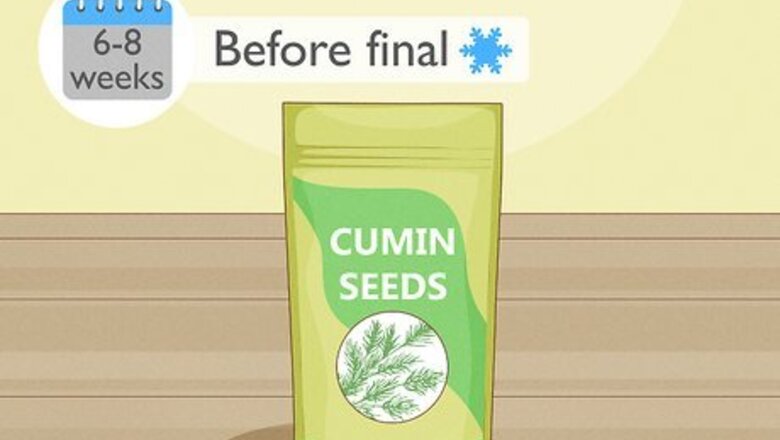
views
Starting Cumin Seeds Indoors
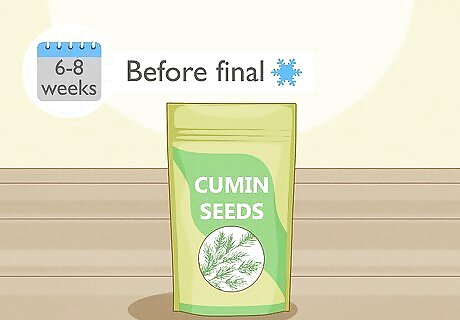
Start with seeds if you have about 6-8 weeks before the final frost date. Growing cumin from seeds is the easiest and cheapest method. You need a few weeks in advance to get them started. Plant your cumin seeds indoors so they have time to mature by the time spring arrives. Purchase cumin seeds at most nurseries, garden supply stores, or online. You can search online to find your frost date calculator, based on your zip code.
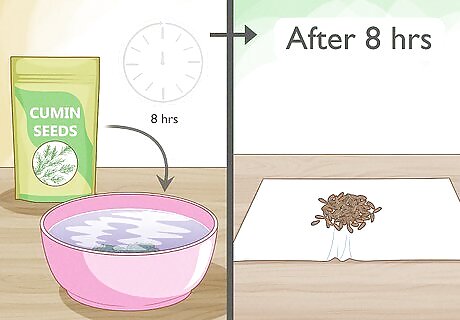
Soak your seeds in water for 8 hours before you sow them. Place your seeds into a medium-size bowl, and pour 2–5 c (470–1,180 mL) of water into the bowl to cover the seeds. After 8 hours, pour out the water and place the seeds on a clean paper towel until you are ready to plant them. The seeds begin germinating when wet, and this helps them sprout faster once you plant them.
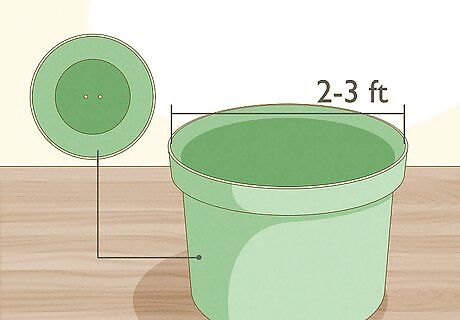
Plant your seeds in containers 2–3 ft (0.61–0.91 m) wide. Get a large container or pot so you can fit several cumin plants inside of it. Select a pot with at least 2 holes so the soil can properly drain. Cumin can easily grow indoors, even though growing outdoors is the optimal method.
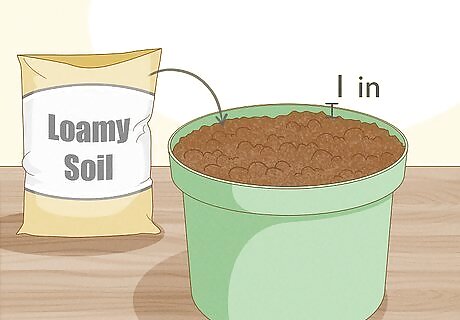
Fill your container with loam soil, leaving about 1 in (2.5 cm) at the top. Pour loam soil into your container using a garden spade. Continue filling it up until you nearly reach the top. Use well-drained, fertile sandy loam soil for best results. If you don't have a garden spade, you can use a plastic cup. Loam soil is made out of sand, silt, and a small amount of clay.
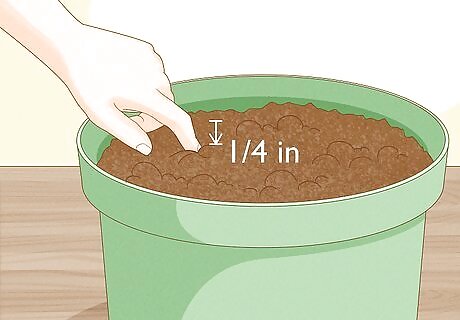
Make a hole about ⁄4 in (0.64 cm) deep with a garden spade. Cumin plants do not have large roots. Remove a bit of dirt with a spade or your fingers so you can easily place the seed inside.

Leave about 4–8 in (10–20 cm) in between each hole. Assign each seed a spot at least 4 in (10 cm) away from the next. The cumin seeds can support each other as they grow, helpful when starting from seeds.
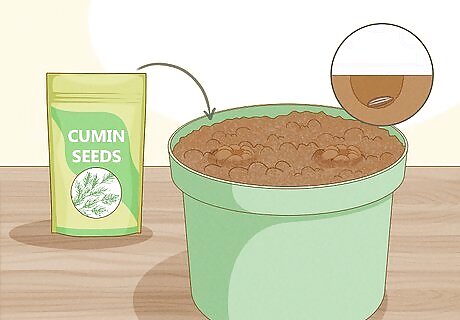
Place 1 seed in each of your holes and cover them with loam soil. After you dig your holes, take your seeds from the paper towel and place them into their own individual hole. Scoop up a bit of your loam soil, and sprinkle it over top. Pour about ⁄2 in (1.3 cm) of soil on top.
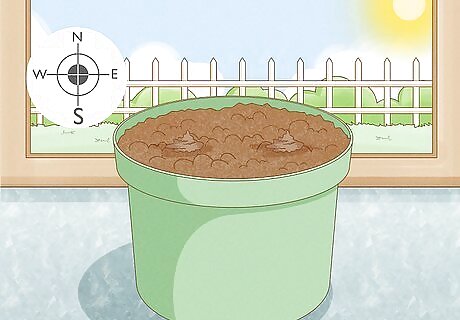
Place your seeds near a south-facing window if you live in a sunny area. Cumin needs direct sunshine for most of the day. Find a south-facing window, and place your plant on the windowsill or in a plant stand next to it. This way, you can still provide adequate sunlight even though you are growing your plants indoors.
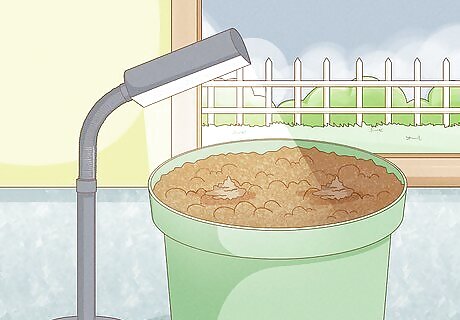
Set up fluorescent plant lights if you live in a cloudy, grey climate. Purchase T5 high output fluorescent plant lights from a home supply store or garden center, and place them 1 ft (0.30 m) above your plants. Follow the instructions on the packaging regarding how to build your specific grow set-up. Leave the lights on for 12 hours a day.

Place an oscillating fan 5–8 ft (1.5–2.4 m) away from your plants. To help with ventilation and air flow, let an oscillating fan run for at least 2 hours a day. Angle the fan so the air flow faces in the direction of your plants. This helps stimulate the plant, making it grow sturdy and strong.
Transplanting Seedlings Outdoors
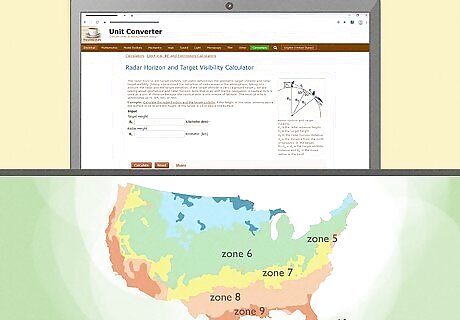
Find your hardiness zone to find out if cumin grows in your area. You can search "hardiness zone calculator" online and choose a website. Type in your zip code, and the calculator will give you a number, like "6." Cumin grows successfully in climate zones 5-10. Cumin plants like warm, dry weather. If you do not live in this climate region, grow your plants indoors
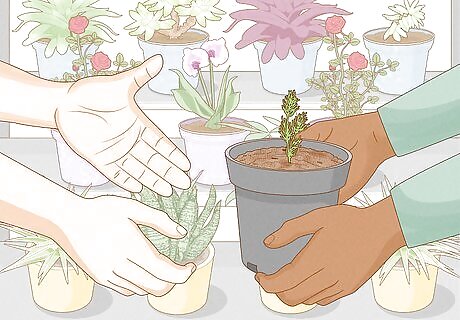
Grow cumin from seedlings if you are starting in the springtime. If you don't have time to start your cumin from seeds, purchase seedlings or starter plants from a local nursery or garden center. Not every store regularly carries cumin plants, so search online and call ahead before you go.
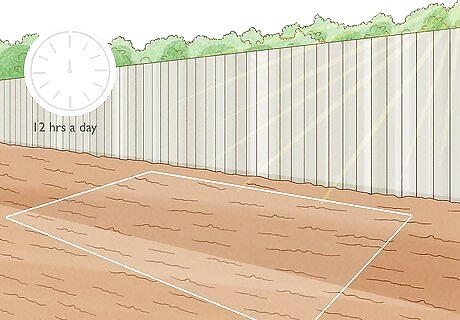
Pick a spot where your plants get full sunshine for 12 hours a day. Whether you are growing plants indoors or outdoors, cumin thrives off of ample sunlight. Select a spot in your yard or near a large window where your cumin can get direct sunshine for most of the day. If you are growing plants indoors, you can place them next to a large rear-facing window, for example.
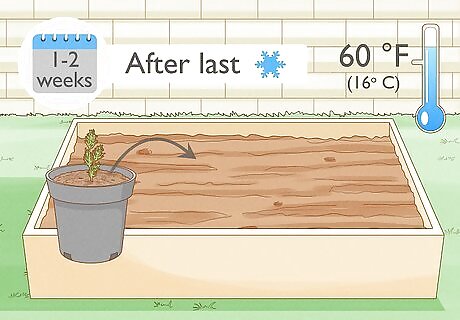
Plant seedlings in a garden bed 1-2 weeks after the last frost. Cumin plants grow healthy nearly anywhere in your garden. You can plant your seedlings outdoors weeks when the temperature is consistently warm. Average temperatures should be 60 °F (16 °C). You can also plant them in raised boxes.

Dig a hole about ⁄4 in (0.64 cm) deep using garden spades. Both cumin seedlings and plants do not have very large root systems, so you only need to dig a small hole.
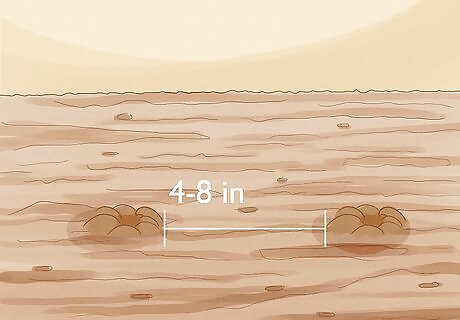
Leave 4–8 in (10–20 cm) in between your cumin plants. For best results, place each seed or plant at least 4 in (10 cm) away from the next. In addition, you can space each row about 18 in (46 cm) away from the next, so your plants have enough room to fully develop. Planting them close together is helpful because the plants support each other during harvest time.
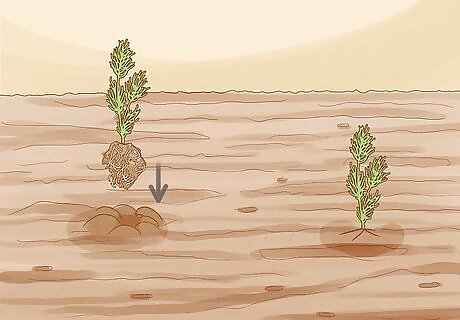
Place your seedling or plant into your hole and fill it with potting soil. Use well-drained, fertile sandy loam soil for best results. Put the plant in the middle of your hole, and scoop your soil with your garden spade. Continue scooping soil until the hole is full to the top. Cumin plants are rather sturdy. They can adjust to a diverse range of soil types. You can purchase your soil at home supply or garden stores.
Caring for Cumin Plants
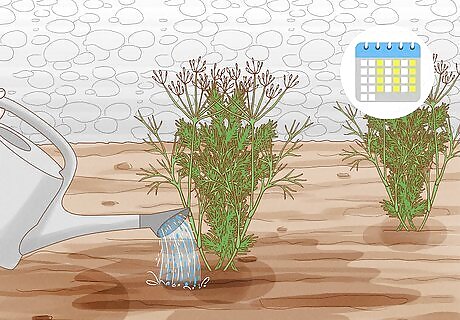
Water your plants 1-3 times a week to keep the soil damp. Using your hose or a watering can, give your plants water regularly. Water the plants for about 30-60 seconds. Be careful not to overwater your cumin plants.

Mist your plants with a spray bottle if it is very hot or dry outside. Cumin plants do not like long periods of dry heat, so it is important to keep them hydrated. In the summer months, it can get very dry and arid, so fill up a spray bottle with water and saturate your cumin plants. Do this as needed or about 1 time a week You can spray the tips, stalks, and roots.
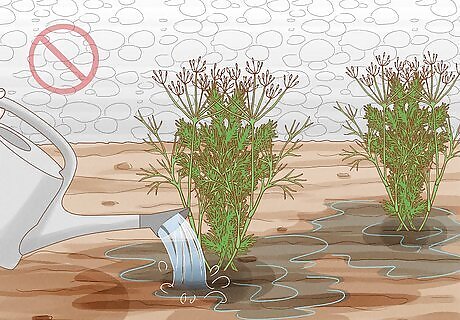
Avoid overwatering your plants so they do not get mildew or root rot. Before you water your plants again, wait until the soil is almost dry before you water it. Then, soak the soil thoroughly. If you continue to water wet soil, your plants can grow mildew or start to rot.
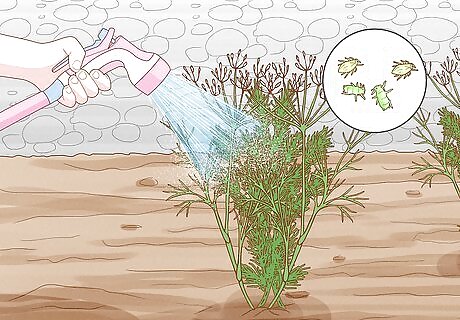
Treat your plants with a natural pesticide if aphids appear. Aphids are a common threat to cumin plants. Fortunately, there are many natural remedies to get rid of them. You can try spraying them with a garden hose, or place onions or garlic around your plants as a natural deterrent. In addition, you can mix 4-5 drops of thyme, peppermint, clove, and rosemary essential oils into a spray bottle filled with water. Then, spray the infested plants thoroughly. Search online for additional natural pesticides if you need more options.
Harvesting Cumin
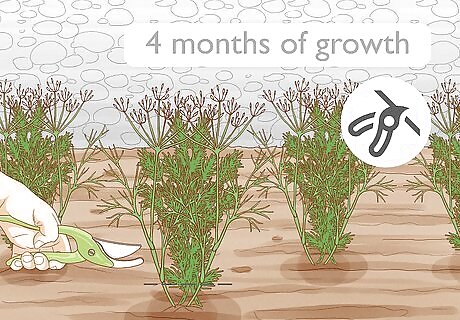
Cut 5-6 cumin plants at their stem after about 4 months of growth. Cumin seeds first bloom into little white and pink flowers, and then the flowers develop into seed pods. When the pods turn brown, the cumin is ready to harvest. Using a pair of scissors or gardening shears, trim a few plants where the flower meets the stem when you notice brown pods. Cumin seeds often ripen unevenly, so keep a watchful eye on your plants after about 4 months of growth. Repeat this every time you see about 5-6 plants with brown pods.
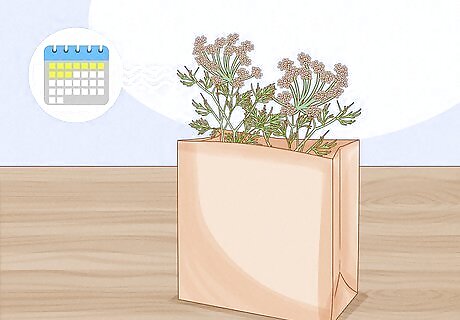
Put the pod clusters inside a paper bag and let them dry for 7-10 days. After you cut down the plants, separate the pod clusters with your fingers and put them inside of a brown paper bag. The pods will easily section off from the plants with little force. Do this for all of your pods, and tie your paper bag up with a twist tie or rubber band. Hang the bag upside down from a string on your ceiling in a warm, dry place. You can hang the bag in your kitchen, for example.
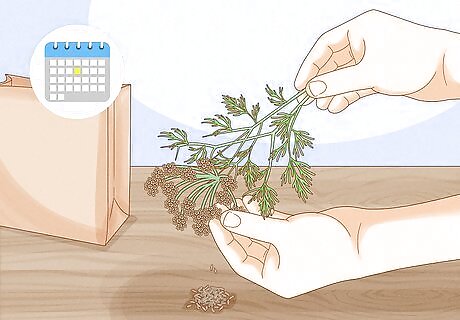
Rub the pods with your fingers to harvest the seeds. After about 10 days, your pods are completely dry and ready for use. To get to the seeds, hold 1 pod in between your index finger and thumb, and rub your fingers together. The seed will easily fall out of the pod. Gather all the seeds, and either use them right away or place them in a airtight container for storage. If your seeds are not coming out of the pod, hit your full brown paper bag against a hard surface to dislodge the seeds. Then, pick through the organic matter to get your seeds.











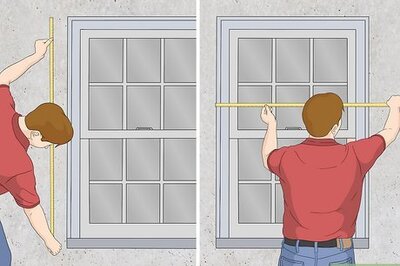








Comments
0 comment